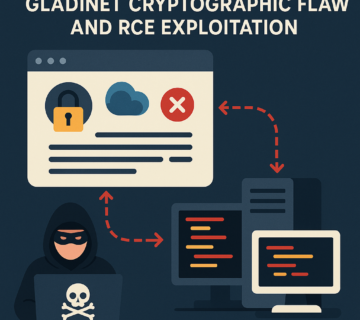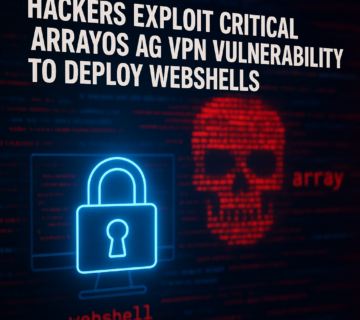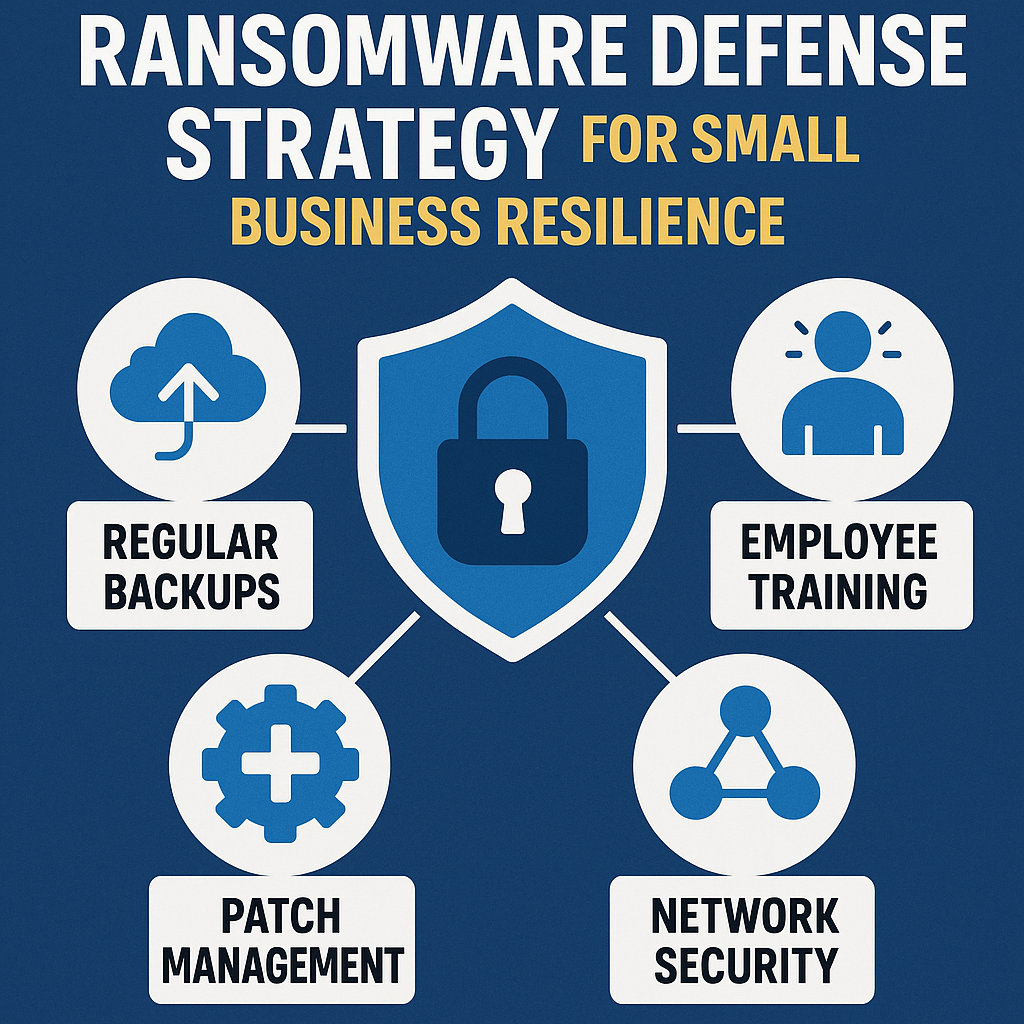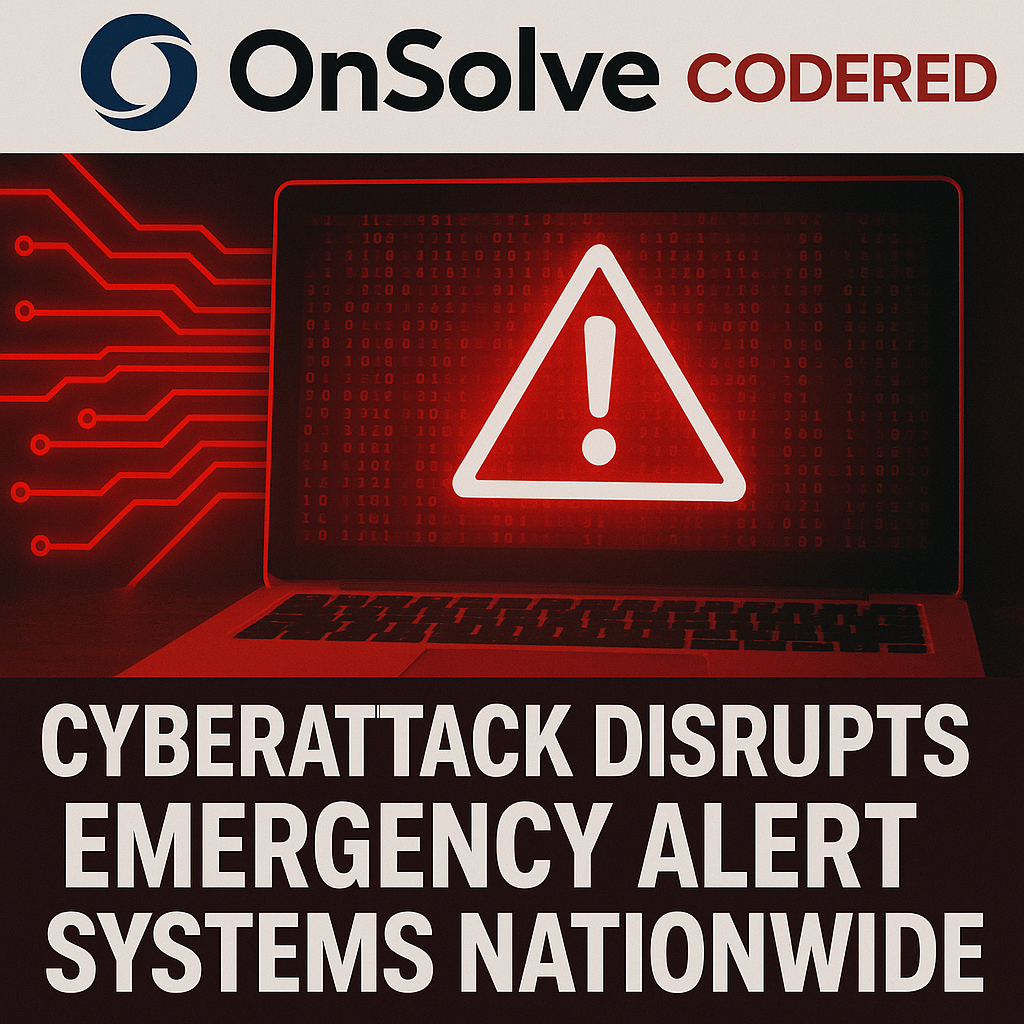ShadowV2 Botnet Exploits IoT Vulnerabilities: AWS Outage Reveals New Cyber Threat
🎙️ Dive Deeper with Our Podcast!
ShadowV2: Weaponizing Global IoT Networks and Security Defense
The cybersecurity landscape continues to evolve with increasingly sophisticated threats targeting the Internet of Things ecosystem. Recent discoveries by security researchers have unveiled a concerning new player in the botnet arena—ShadowV2—a Mirai-based malware strain that specifically targets vulnerable IoT devices from major manufacturers. This emerging threat demonstrates how cybercriminals continue to exploit known vulnerabilities in network-connected devices, turning everyday technology into weapons for large-scale distributed attacks.
Understanding the ShadowV2 Botnet Threat
The most recent development in Mirai-based botnet malware is ShadowV2, which is designed to infiltrate Internet of Things devices from various vendor ecosystems. Security researchers at Fortinet’s FortiGuard Labs identified this threat during October’s significant AWS outage, though investigations confirmed no direct connection between the two events. The timing suggests that malicious actors may have used the widespread service disruption as cover for testing their botnet’s capabilities without drawing immediate attention.
This sophisticated malware campaign targeted devices from prominent manufacturers including D-Link, TP-Link, and others, exploiting at least eight documented security vulnerabilities. The botnet’s activity pattern—operating exclusively during the AWS outage period—indicates a carefully planned test run, suggesting that a more substantial attack campaign may be forthcoming once the threat actors refine their methods and infrastructure.
Vulnerabilities Exploited by ShadowV2
The ShadowV2 botnet demonstrates comprehensive knowledge of IoT security weaknesses by leveraging multiple known vulnerabilities across different device manufacturers. The attack campaign exploited flaws in DD-WRT router firmware dating back to 2009, alongside more recent vulnerabilities discovered in 2024. This broad temporal range highlights how legacy security issues continue to pose risks alongside newly discovered flaws.
D-Link devices faced particular exposure through four separate vulnerabilities, including two critical flaws identified in late 2024. The vendor’s decision not to patch these issues in end-of-life devices creates ongoing risk for organizations still using older equipment. DigiEver surveillance systems, TBK devices, and TP-Link routers also fell victim to known security weaknesses that the botnet operators successfully weaponized for unauthorized access and control.
The exploitation of recently disclosed vulnerabilities demonstrates that threat actors rapidly incorporate new attack vectors into their arsenals. Organizations running affected devices face immediate compromise risk unless they implement appropriate security measures or upgrade to supported hardware that receives regular firmware updates.
Global Impact and Attack Infrastructure
The botnet’s indiscriminate targeting strategy was demonstrated by ShadowV2’s reach across seven different industry sectors. Government agencies, technology companies, manufacturing facilities, managed security service providers, telecommunications networks, and educational institutions all experienced attempted compromises. This broad sectoral impact reveals how IoT vulnerabilities create universal security challenges regardless of organization type or geographic location.
Attack traffic originated from a single command-and-control infrastructure, coordinating compromised devices across six continents. North and South American organizations encountered attacks alongside European, African, Asian, and Australian targets. The global distribution of affected devices illustrates how interconnected networks amplify the impact of IoT security weaknesses, allowing relatively small botnet operations to achieve worldwide reach.
The malware specifically targeted routers, network-attached storage systems, and digital video recorders—devices that typically maintain persistent internet connections and often receive inadequate security attention. These compromised devices become force multipliers for cybercriminals, providing computational resources and network bandwidth for various malicious activities including distributed denial-of-service attacks.
Technical Capabilities and Attack Methods
The malware identifies itself explicitly as “ShadowV2 Build v1.0.0 IoT version” and shares architectural similarities with the Mirai LZRD variant, indicating possible code reuse or shared development lineage. Initial compromise occurs through a downloader script that retrieves the main payload from attacker-controlled infrastructure, establishing persistent access to vulnerable devices without user knowledge or interaction.
ShadowV2 employs XOR encoding to obfuscate its configuration data, protecting filesystem paths, user-agent strings, HTTP headers, and command strings from basic analysis. This obfuscation technique complicates detection efforts and allows the malware to evade signature-based security tools that rely on pattern recognition for threat identification.
The botnet supports multiple distributed denial-of-service attack protocols including UDP flood, TCP flood, and HTTP-based attacks with various implementation methods for each protocol. Command-and-control servers issue attack instructions to compromised devices, coordinating their activities to overwhelm targeted systems with traffic volumes that exceed their capacity to respond effectively.
The Economics of Botnet Operations
Distributed denial-of-service botnets typically generate revenue through two primary business models. Cybercriminals either rent botnet capacity to other threat actors seeking attack capabilities, or they directly extort targeted organizations by launching attacks and demanding payment for cessation. These underground services operate with surprising professionalism, often featuring customer support, service-level guarantees, and tiered pricing structures.
The identity and monetization strategy of ShadowV2’s operators remain unknown at present. However, the professional development approach evidenced by the malware’s capabilities suggests experienced threat actors rather than amateur experimenters. The test-run nature of the observed activity indicates preparation for commercial botnet-for-hire services or planned extortion campaigns against high-value targets.
Organizations should recognize that botnet attacks represent profit-driven criminal enterprises rather than random technical disruptions. Understanding this economic motivation helps security teams anticipate threat actor behavior and implement defenses that address the underlying business incentives driving these attacks.
Protecting Your Organization from IoT Botnet Threats
Defending against ShadowV2 and similar botnet threats requires comprehensive visibility into all Internet-connected devices across your network infrastructure. Many organizations lack complete inventories of IoT devices, creating blind spots that malicious actors exploit for initial access. Regular network discovery scans identify unauthorized or forgotten devices that may harbor unpatched vulnerabilities.
Firmware updates represent the most critical defense against known exploits that botnets leverage for device compromise. However, many IoT manufacturers provide inconsistent update support, particularly for older product lines. Organizations must establish policies for retiring end-of-life devices that no longer receive security patches, replacing them with current models backed by active vendor support and regular firmware releases.
Network segmentation limits the potential damage from compromised IoT devices by restricting their communication capabilities. Isolating IoT devices on separate network segments with strict firewall rules prevents attackers from using compromised routers or cameras as pivot points for accessing sensitive business systems and data repositories.
The Importance of Vendor Support and Product Lifecycle Management
The D-Link vulnerability situation exemplifies a critical challenge in IoT security—vendors discontinuing support for older products while those devices remain in active use. When manufacturers refuse to patch known security flaws in end-of-life equipment, organizations face difficult decisions between continuing to operate vulnerable systems or incurring replacement costs for functional hardware.
Proactive technology lifecycle management addresses this challenge by planning device replacements before vendor support expires. Organizations should establish procurement policies requiring minimum support commitments from IoT vendors and budget accordingly for regular hardware refresh cycles that maintain security posture alongside operational capabilities.
Organizations can avoid investing in devices with short security lifespans by being aware of vendor support promises prior to making purchases. Manufacturers offering extended support periods, transparent security update policies, and clear end-of-life communications provide better long-term value despite potentially higher initial costs compared to budget alternatives.
Indicators of Compromise and Detection Strategies
Security teams should monitor for specific network indicators associated with ShadowV2 activity. Unusual outbound connection attempts from IoT devices to suspicious IP addresses, unexpected firmware modification attempts, or abnormal traffic patterns indicating command-and-control communication all warrant immediate investigation. Fortinet published detailed indicators of compromise that security operations teams can integrate into their threat detection platforms.
Behavioral analysis provides more robust detection capabilities than signature-based approaches alone. IoT devices typically exhibit predictable communication patterns based on their intended functions. Deviations from established baselines—such as routers initiating connections to unfamiliar external servers or cameras generating unexpected data volumes—suggest potential compromise requiring forensic investigation.
Regular security assessments specifically targeting IoT infrastructure uncover vulnerabilities before threat actors exploit them. Penetration testing focused on network-connected devices reveals weak default credentials, unpatched firmware, and insecure configurations that standard vulnerability scans might overlook due to limited protocol support or device accessibility challenges.
The Broader Implications for IoT Security
The ShadowV2 campaign underscores fundamental security challenges inherent in the Internet of Things ecosystem. Manufacturers prioritize functionality and time-to-market over security considerations, creating products with embedded vulnerabilities that persist throughout their operational lifespans. This systemic issue requires industry-wide commitment to secure development practices and ongoing support obligations.
Organizations increasingly depend on IoT devices for critical business functions ranging from facility security to industrial automation. This operational reliance amplifies the consequences of compromised devices beyond simple privacy concerns or temporary service disruptions. Botnet infections can disrupt manufacturing processes, compromise surveillance systems, or facilitate broader network breaches with significant business impact.
Regulatory frameworks addressing IoT security continue evolving as governments recognize the societal risks posed by inadequately secured connected devices. Organizations should anticipate increasing compliance requirements around IoT security practices, vendor selection criteria, and incident response capabilities as policymakers respond to escalating threat landscapes.
Frequently Asked Questions About ShadowV2 and IoT Botnet Threats
What makes ShadowV2 different from other botnet malware?
ShadowV2 distinguishes itself through its targeted exploitation of recent IoT vulnerabilities combined with Mirai architecture improvements. The botnet specifically weaponizes security flaws discovered in 2024 while maintaining compatibility with older vulnerabilities, demonstrating sophisticated threat intelligence capabilities. Its emergence during the AWS outage suggests careful operational planning rather than opportunistic activity.
How can I tell if my organization’s IoT devices are compromised by ShadowV2?
Compromised devices typically exhibit unusual network behavior including unexpected outbound connections, increased bandwidth consumption, or communication with known command-and-control infrastructure. Performance degradation, unexplained firmware changes, or devices becoming unresponsive may also indicate infection. Security monitoring tools configured with ShadowV2 indicators of compromise can automatically detect malicious activity patterns.
Are consumer-grade IoT devices more vulnerable than enterprise equipment?
Consumer devices generally receive less rigorous security testing and shorter vendor support lifecycles compared to enterprise-grade equipment, creating heightened vulnerability to botnet recruitment. However, enterprise devices are not immune—the ShadowV2 campaign successfully targeted commercial routers and network infrastructure alongside consumer products. Proper security practices matter more than device classification alone.
What should organizations do if they discover a compromised IoT device?
Immediately isolate the affected device from your network to prevent lateral movement or ongoing malicious activity. Perform a complete factory reset and update firmware to the latest available version before reinstating network access. If the device no longer receives vendor support, permanent replacement represents the only reliable remediation approach.
Can traditional antivirus software protect IoT devices from botnet malware?
Most IoT devices run specialized operating systems that lack compatibility with conventional antivirus solutions. Protection requires network-level security controls including firewalls, intrusion detection systems, and traffic analysis rather than endpoint-based antivirus software. Some enterprise security platforms offer IoT-specific protection capabilities designed for these unique environments.
Why do manufacturers stop providing security updates for older IoT devices?
Vendors discontinue support due to limited profitability of maintaining legacy product lines, technical constraints of updating older hardware platforms, and business strategies favoring new product sales over extended support commitments. This practice creates significant security risks for organizations continuing to operate end-of-life devices without alternative protection measures.
How Technijian Can Help
Since 2000, Technijian has protected Orange County and Southern California businesses from evolving cybersecurity threats including IoT botnet attacks like ShadowV2. Our comprehensive managed IT services include specialized IoT security assessments that identify vulnerable devices across your network infrastructure before threat actors exploit them.
Our cybersecurity experts implement multi-layered defense strategies specifically designed for modern IoT environments. We provide continuous network monitoring that detects anomalous device behavior indicating potential compromise, coupled with rapid incident response capabilities that contain threats before they impact your business operations. Our team maintains current threat intelligence on emerging botnet campaigns, ensuring your security posture adapts to the latest attack techniques.
Technijian’s technology lifecycle management services help organizations maintain secure IoT environments through proactive hardware refresh planning and vendor evaluation. We assess your current device inventory, identify end-of-life equipment requiring replacement, and recommend enterprise-grade alternatives with robust security features and extended vendor support commitments. Our procurement guidance ensures your IoT investments deliver both operational value and long-term security assurance.
Network segmentation represents a critical defense against IoT botnet threats, and Technijian designs and implements secure network architectures that isolate vulnerable devices from sensitive business systems. Our engineers configure granular firewall rules and access controls that prevent compromised IoT devices from serving as pivot points for broader network breaches while maintaining the functionality your operations require.
Contact Technijian today to schedule a comprehensive IoT security assessment for your organization. Our Irvine-based team serves businesses throughout Orange County and Southern California, delivering the expertise and proactive protection your organization needs against sophisticated threats like ShadowV2. Don’t wait for a compromise to expose your vulnerabilities—let Technijian strengthen your defenses before threat actors target your network.
About Technijian
Technijian is a premier Managed IT Services provider in Irvine, specializing in delivering secure, scalable, and innovative AI and technology solutions across Orange County and Southern California. Founded in 2000 by Ravi Jain, what started as a one-man IT shop has evolved into a trusted technology partner with teams of engineers, AI specialists, and cybersecurity professionals both in the U.S. and internationally.
Headquartered in Irvine, we provide comprehensive cybersecurity solutions, IT support, AI implementation services, and cloud services throughout Orange County—from Aliso Viejo, Anaheim, Costa Mesa, and Fountain Valley to Newport Beach, Santa Ana, Tustin, and beyond. Our extensive experience with enterprise security deployments, combined with our deep understanding of local business needs, makes us the ideal partner for organizations seeking to implement security solutions that provide real protection.
We work closely with clients across diverse industries, including healthcare, finance, law, retail, and professional services, to design security strategies that reduce risk, enhance productivity, and maintain the highest protection standards. Our Irvine-based office remains our primary hub, delivering the personalized service and responsive support that businesses across Orange County have relied on for over two decades.
With expertise spanning cybersecurity, managed IT services, AI implementation, consulting, and cloud solutions, Technijian has become the go-to partner for small to medium businesses seeking reliable technology infrastructure and comprehensive security capabilities. Whether you need Cisco Umbrella deployment in Irvine, DNS security implementation in Santa Ana, or phishing prevention consulting in Anaheim, we deliver technology solutions that align with your business goals and security requirements.
Partner with Technijian and experience the difference of a local IT company that combines global security expertise with community-driven service. Our mission is to help businesses across Irvine, Orange County, and Southern California harness the power of advanced cybersecurity to stay protected, efficient, and competitive in today’s threat-filled digital world





